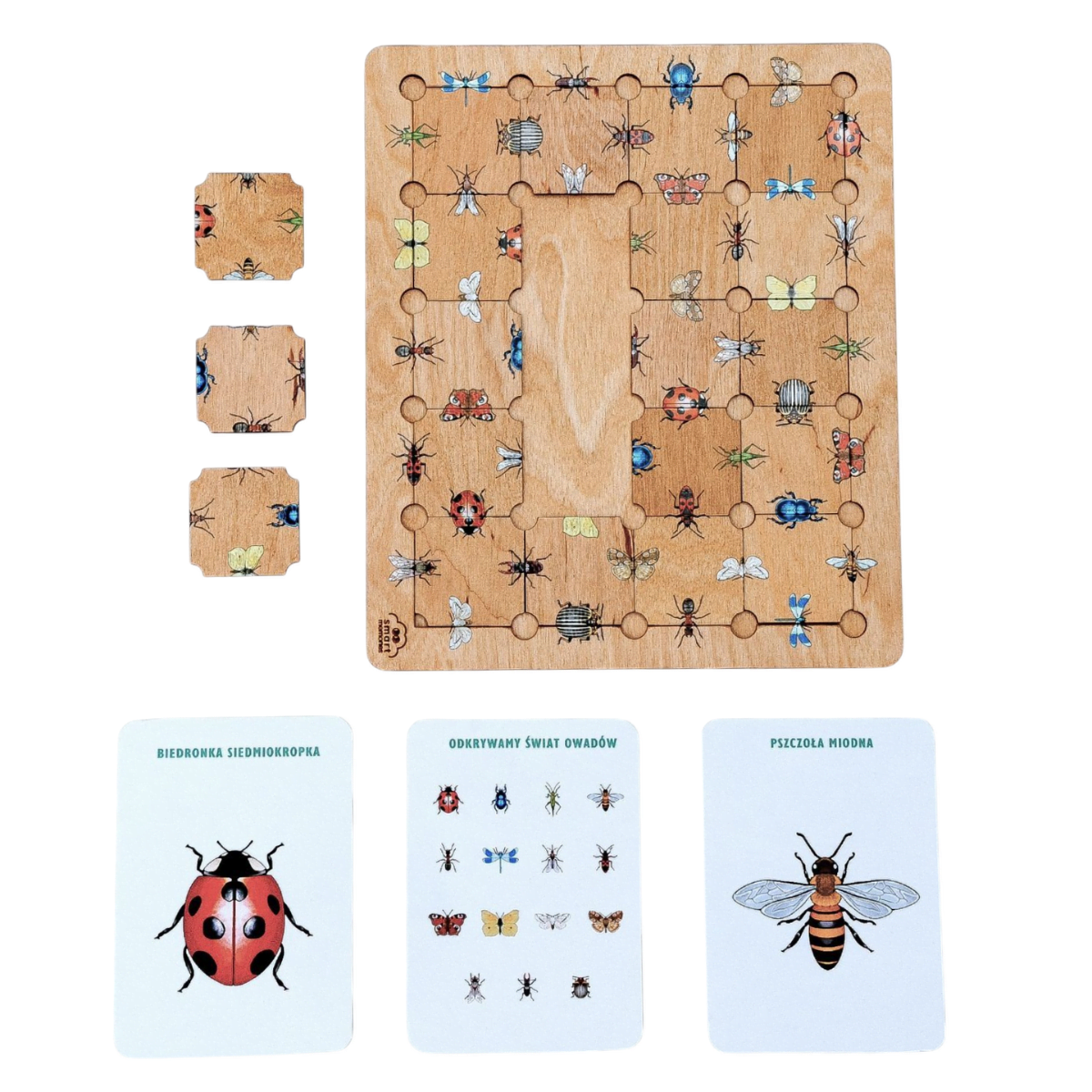Wooden Insects Puzzle – Montessori puzzle game
129.00 zł
Touch System
ReadWooden puzzle Insects is a puzzle consisting of 20 pieces. The drawings placed on the edges of each tile form only one combination, can you manage to reproduce the pattern?
The puzzle is also an incentive to explore the world of insects. At first glance, these animals may seem inconspicuous and boring, but don’t be fooled! Insects present a whole range of colors, shapes, habits or ways to defend themselves from predators. The set includes educational cards with original graphics, depicting insect species depicted on the puzzle.
The logic puzzle helps to shape, first of all: concentration, logical thinking, visual perception, spatial imagination, eye-hand coordination, small motor skills. Did you know that:
- Concentration is the ability to focus on something specific. It can be a task being performed, a particular object or instructions given by a teacher. Concentration ensures children’s proper development and is essential at each stage of their education.
- Logical thinking allows one to analyze situations, draw conclusions and develop possible solutions based on the information gathered. This is one skill that can be difficult for a child to achieve. Why practice logical thinking? Because it is essential at every stage of our lives.
- Visual perception allows a child to know and understand the world around him, and is essential for further education when learning to read, write and count. In the puzzles, the picture is divided by straight vertical and horizontal lines into identical pieces. Therefore, in order to put together a puzzle picture, the child must perform visual analysis and synthesis.
- Thanks to spatial imagination, children are able to predict what an arrangement of several pieces will look like, determine the relationship between objects or identify their own location in the field. Spatial imagination is extremely important for further learning, especially for the development of mathematical and technical skills.
- Eye-hand coordination makes it possible to achieve precision of movements, and is essential for everyday activities – from eating, dressing, drawing or writing independently to physical activity. Eye-hand coordination additionally requires training of the child’s hands and fingers, i.e. fine motor skills.
- Small motor skills are the precise movements of the hands and fingers, such as squeezing, stroking, kneading and grasping. It is essential in many areas of a child’s life and the achievement of independence (e.g. brushing teeth, buttoning up, eating, writing).
Previous lowest price was 129.00 zł.
Fun proposal
I am a blacksmith, a wingless blacksmith – number of players: 2-15, suggested age: 7+
The purpose of the game is to learn about the insects we present in our puzzle. Choose together the animals you want to learn about and prepare their cards, the number of insects chosen is to be equal to the number of players. Together, read the information on the cards and try to remember as much as possible. Then shuffle the cards and, with your eyes closed, draw one at a time and determine the order of the players. The person who starts the game impersonates his insect and tells about himself (e.g. I have red wing covers with seven black dots and eat aphids – who am I?), the other players try to guess what the animal is. When the other players have solved the riddle or run out of clues and the storyteller reveals who she was, the riddles begin to be asked by the next person. In this version of the game there is no counting of points, everyone is a winner.
Tips:
- The difficulty level of the game can be modified by dividing the players into teams; then the team guesses together what insect they are talking about; the riddles can also be asked together or done by one person selected by the team (every turn the person can be different) – the choice is yours;
- in order to add competitive elements to the game, a points game can be introduced:
- Variant 1 – the person who guessed the animal in question gets 1 point; if no one guesses the riddle then no one gets a point;
- Variant 2 – determine the maximum number of clues, the person who correctly guesses a given insect gets points in the proportion inverse to the number of clues spoken (for example, it was established that about each animal we give 5 clues, if someone gives the correct answer after 1 hint he gets 5 points, after 2 hints he gets 4 points, etc.), if no one guesses the animal after the clues are exhausted, no one gets points;
- Variant 3 – in addition, you can introduce the rule that if no one guesses the riddle, then the maximum number of points gets the person telling about the insect in question (note: this can significantly increase the level of difficulty, the person telling the riddles will strive to ensure that no one guesses them, so the information presented can be more complicated).









